
Shakti had been painting since childhood, though apart from some targeted instruction at school (Mayo College, Ajmer) with the legendary Mr. Gue, he did not study art formally. Shakti was a ‘self-taught artist’, and making art remained an integral part of his life even as he worked and found success in a management career. Until his relocation to the US in 1979, Shakti worked at Citibank and Lintas in Bombay. In the early 1980s, he took a sabbatical from his job at Digital Equipment Corporation to work as a development consultant for the World Bank in Sri Lanka. His years there were transformative, for he got an opportunity to deepen his keen interest in meditation with the German Buddhist nun, Sister Ayya Khema.
Shakti’s journals throughout his time in Sri Lanka and his return to corporate life in the US, which he eventually quit to work as a full-time artist in 1990, are replete with two of his primary concerns – his work as an artist and an artist’s role in society, and his deep engagement with inner meditative work. It is not surprising that his art was to become intensely infused with insights from his spiritual life. He writes in 1992, “Much of my work has been an effort to create works that embody and communicate what I have understood. I am selective about form, colour, story to capture ideas that represent points of culmination in my journey.”
Esta historia es de la edición July 2021 de Art India.
Comience su prueba gratuita de Magzter GOLD de 7 días para acceder a miles de historias premium seleccionadas y a más de 9,000 revistas y periódicos.
Ya eres suscriptor ? Conectar
Esta historia es de la edición July 2021 de Art India.
Comience su prueba gratuita de Magzter GOLD de 7 días para acceder a miles de historias premium seleccionadas y a más de 9,000 revistas y periódicos.
Ya eres suscriptor? Conectar

Parts, Wholes And The Spaces In Between
Sonal Sundararajan introduces Samira Rathod's free-spirited and rebellious explorations in the world of architecture, furniture and design.

"The Fine Art of Going to the Pictures."
Dr. Banerjee in Dr. Kulkarni's Nursing Home at Chemould Prescott Road brings together 26 paintings featuring a series of dramatic scenes from Hindi and Bengali films. In conversation with Abhay Sardesai, artist Atul Dodiya talks about childhood trips to movie halls, painted figures gripped by tension, and the closeness and remoteness of cinematic images.
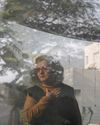
"To Finally Have Something of Your Own to Mine."
Dayanita Singh is the recipient of the coveted 2022 Hasselblad Award. Keeping the photograph at the centre, she speaks to Shreevatsa Nevatia about books, book objects, photo novels, exhibitions and museums.
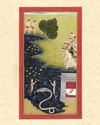
OF DIVINE LOSS
Shaurya Kumar explores the relationship between the subject and object of devotion, finds Aranya.

THE PAST AND ITS SHADOWS
Neha Mitra visits two shows and three artists in Mumbai.
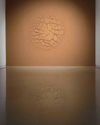
FORCE OF NATURE
Alwar Balasubramaniam dwells on absences and ephemeralities in his new work, states Meera Menezes.
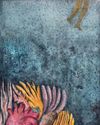
SHAPES OF WATER
Devika Sundar's works delineate the murky, malleable boundaries between the human body and the organic world, says Joshua Muyiwa.

INTIMATIONS OF INTIMACY
Sunil Gupta shares his journey with Gautami Reddy.

THE FRACTURED PROSPECT
Nocturnal landscapes as ruins in the making? Adwait Singh looks at Biraaj Dodiya's scenes of loss.
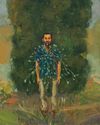
TEETERING BEYOND OUR GRASP
Meera Menezes traces Mahesh Baliga's journey from Moodabidri to London.